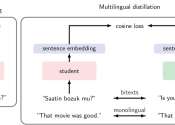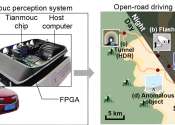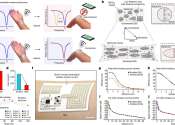'Self-healing' solar cells could become reality
Solar cells of the future could be able to withstand corrosive susceptibility by "self-healing," in a break-through the scientific community has long been pursuing.
Jun 27, 2024
0
47
Nature, first published on 4 November 1869, is ranked the world s most cited interdisciplinary scientific journal by the Science Edition of the 2010 Journal Citation Reports. Most scientific journals are now highly specialized, and Nature is among the few journals (the other weekly journals Science and Proceedings of the National Academy of Sciences are also prominent examples) that still publish original research articles across a wide range of scientific fields. There are many fields of scientific research in which important new advances and original research are published as either articles or letters in Nature. Research scientists are the primary audience for the journal, but summaries and accompanying articles are intended to make many of the most important papers understandable to scientists in other fields and the educated general public. Towards the front of each issue are editorials, news and feature articles on issues of general interest to scientists, including current affairs, science funding, business, scientific ethics and research breakthroughs. There are also sections on books and arts.
Electronics & Semiconductors

Solar cells of the future could be able to withstand corrosive susceptibility by "self-healing," in a break-through the scientific community has long been pursuing.
Jun 27, 2024
0
47
Computer Sciences

Researchers from the University of Oxford have made a significant advance toward ensuring that information produced by generative artificial intelligence (AI) is robust and reliable.
Jun 20, 2024
0
29
Engineering

Safer, more efficient movements for factory workers and astronauts, and improved mobility for people with disabilities could someday become a more widespread reality, thanks to research published June 12 in the journal Nature.
Jun 12, 2024
0
65
Computer Sciences

The technology behind Meta's artificial intelligence model, which can translate 200 different languages, is described in a paper published in Nature. The model expands the number of languages that can be translated via machine ...
Jun 7, 2024
0
52
Hardware

With the rapid advancement of artificial intelligence, unmanned systems such as autonomous driving and embodied intelligence are continuously being promoted and applied in real-world scenarios, leading to a new wave of technological ...
Jun 5, 2024
0
51
Energy & Green Tech

Researchers have developed a low-cost, energy-efficient method for making materials that can capture carbon dioxide directly from the air.
Jun 5, 2024
0
123
Automotive

Artificial intelligence (AI) combined with a novel bio-inspired camera achieves 100-times faster detection of pedestrians and obstacles than current automotive cameras. This important step for computer vision and AI achieved ...
May 29, 2024
0
59
Engineering

A new material that moves like skin while preserving signal strength in electronics could enable the development of next-generation wearable devices with continuous, consistent wireless and battery-free functionality.
May 22, 2024
0
47
Engineering

Researchers from the University of Cambridge have developed a method to produce very low emission concrete at scale—an innovation that could be transformative in the transition to net zero.
May 22, 2024
0
81
Engineering

Metals get softer when they are heated, which is how blacksmiths can form iron into complex shapes by heating it red hot. And anyone who compares a copper wire with a steel coat hanger will quickly discern that copper is ...
May 22, 2024
0
56